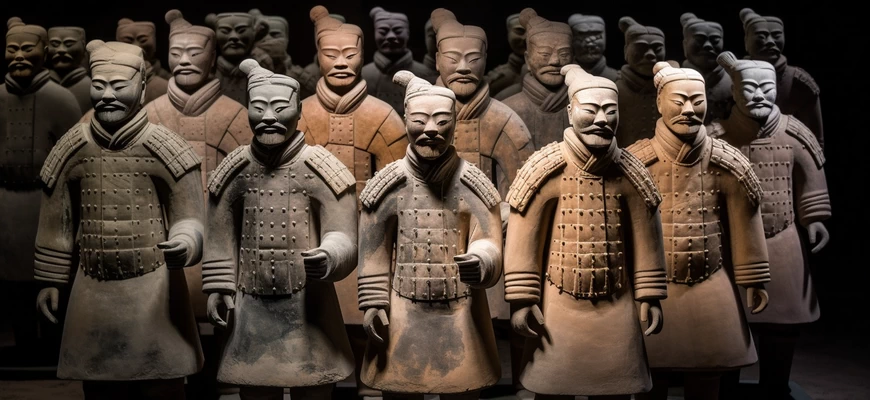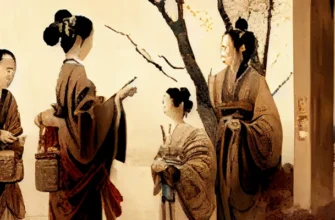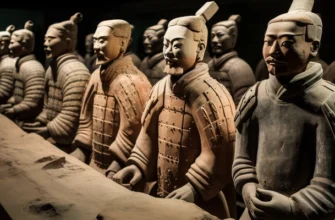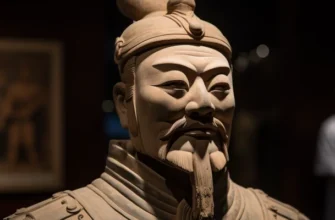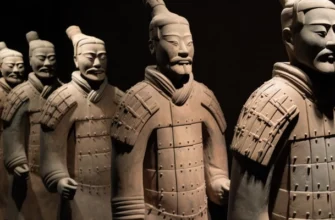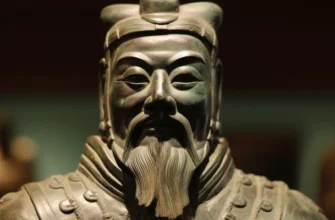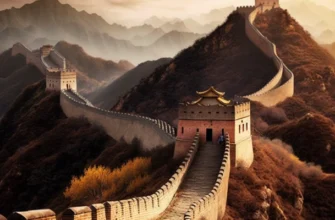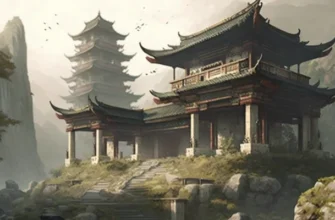The Xia and Shang dynasties are two of the oldest dynasties in Chinese history. The Xia dynasty, which ruled the western part of China, was founded by Yu the Great around 2100 B.C. It was the first dynasty to use a system of government based on classes and bureaucracy. It was also the first dynasty to use military technology, which allowed it to build a strong army.
The Shang dynasty, which ruled the eastern part of China, was founded by Tang the Perfect around 1600 B.C. This dynasty is considered the first dynasty to be documented. The Shang Dynasty developed a calendar system, a writing system and art, and enriched the country’s culture and religion.
One of the most important achievements of the Shang Dynasty was the discovery and application of bronze casting. The bronze vessels created during the Shang period are considered to be among the most valuable artifacts of Chinese culture.
Both dynasties had a significant impact on the development of Chinese culture and history, and their influence can be seen in many aspects of modern Chinese life, including art, calendar, government, and religion.
The Xia dynasty
The Xia Dynasty is the first of the legendary dynasties in Chinese history. It was founded by Yu the Great around 2100 BC and ruled the western part of China.
There are two versions of the origin of the Xia Dynasty. According to the first version, Yu the Great became the ruler after defeating powerful floods on the Huang He and Yangtze rivers. According to the second version, Yu-tzu became the ruler after he overthrew the tyrant Qi the Tyrant.
The Xia Dynasty was very important in the history of China, as it laid the foundation for the further development of culture and civilization in this part of the world. It was the first dynasty to use a system of government based on classes and bureaucracy. The Xia dynasty was also the first dynasty to use military technology, which allowed it to build a strong army.
Although the Xia Dynasty is considered legendary, many archaeological evidence found in Henan province confirms its existence. In particular, the discovery of many relics and artifacts has allowed researchers to gain more information about the Xia Dynasty, its culture and traditions.
Origin and legendary rulers
The Xia Dynasty emerged around 2100 BC and ruled in western China. This dynasty is the first of the legendary dynasties in Chinese history.
According to legend, the Xia Dynasty was founded by Yu the Great, who became the ruler after defeating powerful floods on the Huang He and Yangtze rivers. According to another version, Yu became the ruler after the overthrow of the tyrant Qi the Tyrant.
The legendary rulers of the Xia Dynasty were as follows:
Yu the Great
Qi the Second
Hui-tang (Shaokang)
Qi the Third (Qi the Third)
Bu Bing (Bu Bing)
Jim-shao (Zhong Kang)
Huai-zong (Jie)
Ta Ching (Yu’s son)
These rulers of the Xia Dynasty ruled for about 400 years, until they were overthrown by the Shang Dynasty. The Xia Dynasty was of great importance in the history of China, as it laid the foundation for the further development of culture and civilization in this part of the world.
Development and peculiarities of the rule
The Xia Dynasty was the first legendary dynasty in Chinese history, and it is difficult to learn more about its rule. Nevertheless, according to legends and other historical records, we can draw some conclusions about the peculiarities of the Xia Dynasty.
One of the main features of the Xia Dynasty was that it was based on the principles of morality and humanism. For example, Yu the Great, the founder of the dynasty, was famous for his good deeds, which included helping people affected by floods.
In addition, the Xia Dynasty is also known for its development in agriculture and other important sectors of the economy. During its reign, new agricultural technologies were introduced that improved food production and provided food for the Chinese population.
Finally, the Xia Dynasty is also known for its inventions and the development of scientific knowledge. This dynasty started the calendar and developed a culture of writing and language.
However, unfortunately, much of the information about the Xia Dynasty is legendary and may not correspond to historical facts. Therefore, a more detailed analysis of its rule and development is a difficult task for historians and researchers.
Shang Dynasty
The Shang Dynasty was the second dynasty in the history of China and existed around 1600-1046 B.C. Its reign was characterized by significant development of the social, economic and cultural spheres of the people’s life.
The Shang Dynasty was known for its development of metallurgy, in particular the production of bronze objects such as dishes, weapons, and ritual objects. Such objects served not only domestic but also religious and political purposes, and their production reflected the influence of social organization on the material culture of the state.
The Shang dynasty is also known for its development of the writing system. The Chinese characters that appeared during the Shang are among the oldest written symbols in the world and had a great influence on the development of writing and culture in Asia.
The state was administered centrally using a clear hierarchy of officials who served the dynasty. A system of written reports and tax collection was introduced to increase the efficiency of governance.
Finally, the Shang dynasty is also known for its cultural development. While cultural development was heavily dependent on religion, scientific development was practically related to the production of metal objects and medicine.
A prominent feature of the Shang dynasty is also its social organization, in particular, the system of classes and social levels. Government officials, the military, and the clergy stood at the top of the social hierarchy, while ordinary peasants and artisans were at the bottom. In this system of social classes, the family also played an important role, with the man acting as the head of the family and making decisions related to the family’s life and economy.
In general, the Shang dynasty was a fairly stable state that carried out effective governance and developed various sectors of the economy and culture. However, in the early eleventh century BC, the dynasty suffered setbacks in foreign policy, which led to its overthrow during the war with the Zhou Dynasty. Nevertheless, the consequences of the Shang Dynasty can be traced in Chinese history for a long time, and it is still considered an important period in the history of this country.
Origin and development
The Shang Dynasty (also known as the Shang) originated in what is now Henan Province in China around 1600-1046 B.C. This dynasty was the first dynasty to be mentioned in Chinese history and the first to rule over a wide area.
Legends are associated with the origin of the Shang dynasty. According to legend, the rulers of the Shang Dynasty were descended from the titan Yu, who was considered the god of water and air. He taught people how to hunt, fish, and sow grain. Yu passed on his knowledge to his successor, Gong, who founded the Shang Dynasty.
During the Shang Dynasty, China was divided into several provinces, each ruled by provincial lords. However, at the beginning of the Shang reign, the lord Yu was recognized as the ruler of all of China and founded Huanghe (an industrial center) and the province of Luo. Later, with the founding of Shanxi Province and reforms, the Tang ruler created a centralized state with one capital.
The Shang dynasty was known for its economic and cultural development. It developed pottery, blacksmithing, and other crafts. The Shang Dynasty was also known for its music and dancing, which became important elements of Chinese culture.
The government of the Shang dynasty was organized on the principle of a ruler-manager who had all the power and paid great attention to military issues. The Shang rulers also promoted the development of religion and founded their own religious centers.
However, over time, the Shang dynasty became weaker and its power was divided among many local rulers. The consequence was the collapse and decline of the Shang dynasty, which came around 1046 BC.
An important feature of the Shang dynasty was the use of a calendar based on observations of natural phenomena. This allowed them to plan crop rotation and other agricultural activities. The Shang calendar also included an animal zodiac, which later became an important element of Chinese culture.
In general, the Shang Dynasty had a great influence on the development of China and was the first stage in the country’s history. Many of the traditions and rituals that were initiated by the Shang Dynasty continue to this day and have become an important element of Chinese culture.
Organization and features of the government
The Shang Dynasty had a fairly developed system of government based on the clan principle. Each clan was represented by its own leader, who in turn was a member of the central council of the dynasty ruler.
The state was divided into territorial units called lands. Each land had its own head, who was responsible for enforcing laws and collecting taxes. The head of the land also provided assistance to the dynasty ruler in case of war or other emergencies.
Power in the Shang dynasty was passed down from father to son. However, if the successor was unfit to rule, power could be transferred to another family member.
The Shang dynasty also had a developed system of legislation and justice. Each land had its own court, which heard cases and made decisions based on local law. There was also a central court system that dealt with complex cases and conflicts between the lands.
In terms of economy, the Shang dynasty was based on agriculture and crafts. Agriculture was the main source of state revenue, and crafts produced basic necessities for the population.
The main religions in the Shang dynasty were shamanism and animism. The rulers of the dynasty promoted the development of religion and founded their own religious centers.
The contribution of the Xia and Shang dynasties to Chinese culture and civilization
The Xia and Shang dynasties have made a huge contribution to Chinese culture and civilization. It is thanks to the Xia Dynasty that the concept of state power and hierarchy appeared in Chinese history, and historical materials were first collected in the Book of Documents.
The Shang dynasty, in particular, made a significant contribution to the development of the Chinese written language. While the Xia Dynasty used drawings and signs to convey information, the Shang Dynasty developed a writing system using hieroglyphics. The Shang dynasty also gave impetus to the development of metallurgy and other crafts.
Both dynasties made a significant contribution to the development of Chinese culture, including music, art, literature, and philosophy. Most of the crafts that developed in the Shang Dynasty, such as ceramics and bronzes, became known for their high quality and were highly regarded both in China and abroad.
All of these achievements played a significant role in the development of Chinese civilization and laid the foundation for China’s future cultural and scientific development.
Conclusions
The Xia and Shang dynasties are of great importance in Chinese history and world culture. They became the first state formations on the territory of China and initiated the development of Chinese civilization.
The Xia Dynasty introduced the concept of state power, organized social life, and collected historical materials in the Book of Documents, which made it possible to preserve and study the history of China since ancient times.
The Shang Dynasty developed a system of writing using hieroglyphs, which allowed for more accurate and efficient communication. In addition, the Shang Dynasty became the founder of famous crafts such as ceramics and bronze products, which have gained high fame in the culture of the world.
The contributions of the Xia and Shang dynasties to the development of Chinese culture, art, music, philosophy, and other fields were enormous and invaluable. They became the foundation of Chinese civilization, which had a great influence on the culture and history of the world.
Consequently, the Xia and Shang dynasties are important in Chinese history and world culture, and their achievements and contributions are still being preserved and studied today.
